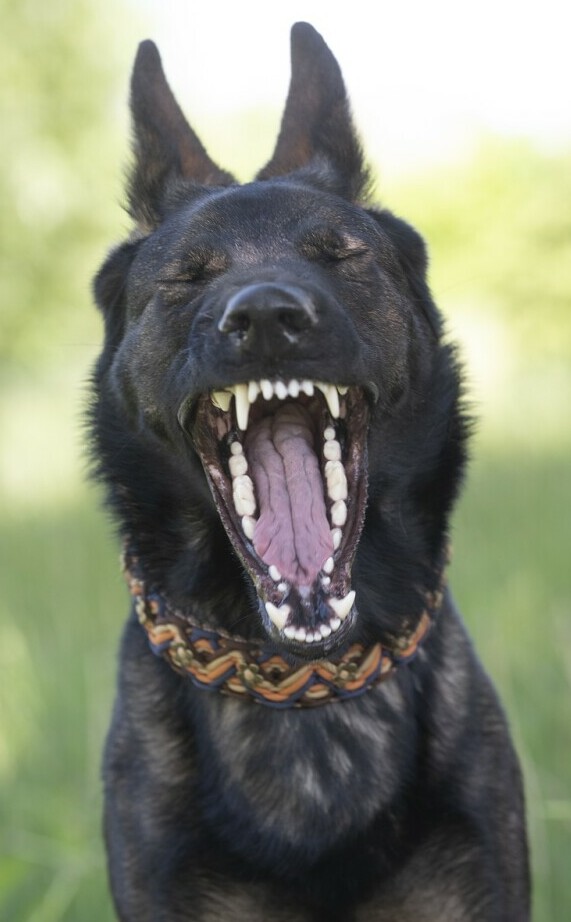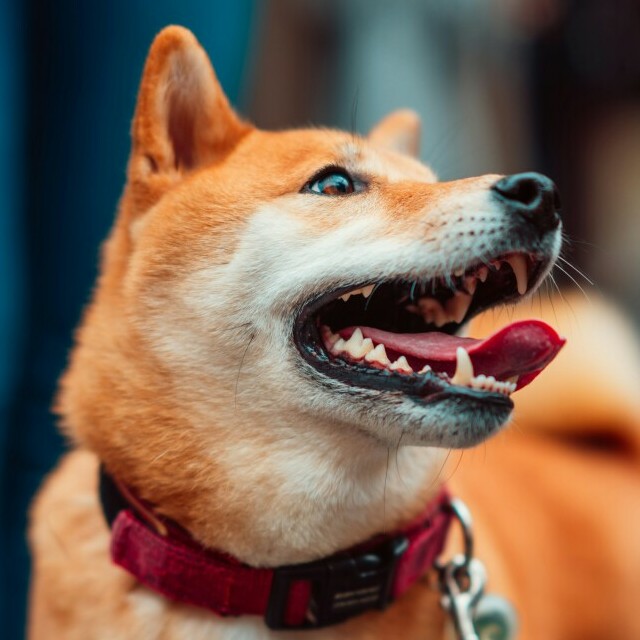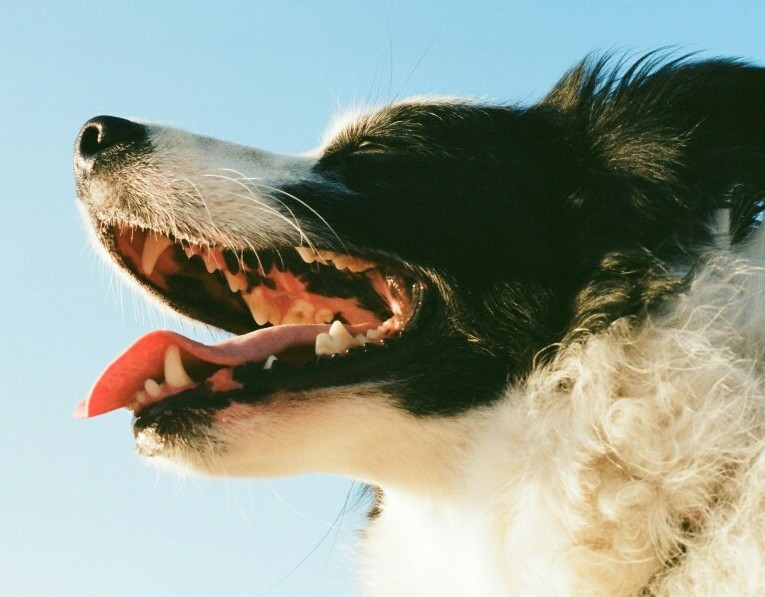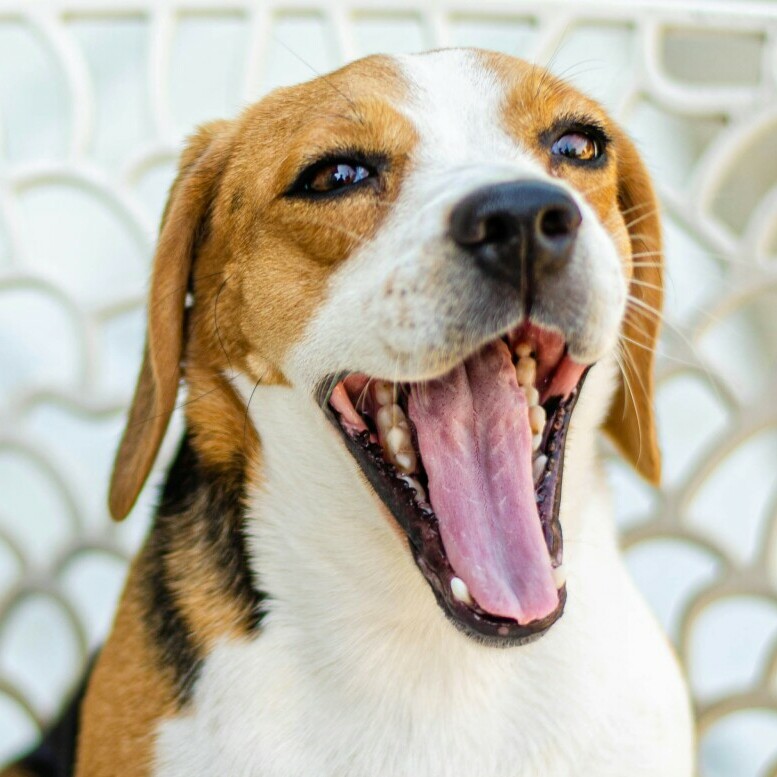
Have you ever leaned in for a cuddle with your furry best friend, only to be greeted by less-than-pleasant doggy breath? You’re definitely not alone. Bad breath in dogs, medically known as halitosis, is a common complaint among pet owners, and it’s not just a nuisance — it can be a sign of health issues that need attention. So we thought we should step in on the topic of what makes a dogs breath bad and how to help make it better.
Bad breath isn’t something to simply turn your nose up at; it’s a cue that your faithful companion may need a bit more TLC — especially in the dental department. Just as with humans, a dog’s oral health is closely tied to their overall well-being, and neglecting it can lead to problems down the road. For more information on proper dental hygiene for your pup, click here.
We understand it’s easy to overlook the significance of regular oral care for dogs, especially when life gets busy. But don’t worry too much about past oversights; today, we’re here to help you with practical advice and easy-to-follow steps to make sure Fido’s breath is fresh, and their tail keeps wagging happily. Let’s dive into the root causes of your pups unpleasant breath.
Looking for fresh dog food delivered? Click here.

Sniffing Out the Causes: Understanding Why Dogs’ Breath Smells
You’re going to find out about the not-so-mysterious reasons behind your dog’s less than pleasant breath. First and foremost, the primary culprit is often dental disease. Just like us, dogs get plaque, tartar, and gingivitis, all of which can play havoc with their mouth odor. So if your dog doesn’t have a proper dental hygiene routine, you may want to consider getting one. Keeping your pups mouth clean and healthy is going to be the best way to keep their breath under control.
However, it’s not just about poor oral hygiene. Your dog’s diet can also be a big factor. Some foods might contribute more to the problem, and certain dogs might have sensitivities that affect their breath. Their overall lifestyle and habits – from what they chew on to how much they drool – can also leave their mark on their breath. So consider everything that your dog is eating as this may be a factor in it’s foul breath.
Bad breath in dogs could also wave a red flag for more serious health issues. For example, a sweet or fruity smell to your dog’s breath might indicate diabetes, while a urine-like scent may be a sign of kidney disease. So it’s important to not shrug off bad breath as just a smelly annoyance. It may in fact be an underlying issue that requires attention from a vet.
Now, while bad breath can signal a range of issues, don’t worry too much about fetching an immediate diagnosis on your own. This discovery phase will segue smoothly into actionable solutions. Once you’re familiar with what’s causing your furry friend’s foul breath, you’re well-placed to nip the issue in the bud. Look for these things to help hone in on the reason behind the bad breath.

Freshening Up: Proactive Solutions for Your Dog’s Oral Health
You’re going to find out about a handful of effective strategies that can turn your dog’s bad breath into a thing of the past. We’re not just talking quick fixes, but real, long-term solutions. Maintaining a routine can help curb the issues that may arise. Keeping their mouth fresh and clean can go a long way in not only helping their breath clean, but maintaining white and strong teeth, as well as having a healthy mouth in general.
Daily brushing is crucial. Just like for us, regular brushing can immensely reduce plaque and prevent tartar build-up. Find a dog-friendly toothpaste (never use human toothpaste, as it can be harmful to them) and a suitable dog toothbrush.
Dental treats and chews can supplement brushing. They’re engineered to reduce plaque and freshen breath. Pick ones that are vet-recommended and suited to your dog’s size and dietary needs. There are lots of options these days but always read the packaging and make sure that they are made to reduce plaque and freshen breath.
Your vet should be your ally in this fight against foul dog breath. Regular dental check-ups are as important for dogs as they are for us. Your vet can identify any underlying issues while providing professional cleaning. They can help solve any issues that regular dental hygiene might not.
Switching up your dog’s diet or adding in breath-improving supplements can make a big difference. Some foods are specifically formulated to improve dental health, and water additives can help keep their mouth clean. Just adding these to your pups water can help keep their breath fresh, and they still enjoy their water!
Consistency is key, so make a habit out of these practices. Mark your calendar for brushing and vet visits to stay on track. Remember, good habits take time to form but they’re worth the investment for your furry friend’s health.

Enjoying Your Fresh-minted Friend: Maintaining Oral Hygiene for the Long Haul
You’ve put in the effort, and now you’re seeing (and smelling!) the fruits of your labor. Your dog’s breath is fresher, and you can both enjoy snuggles without holding your breath. This isn’t just a victory for your nose; it’s a triumph for your dog’s health as well.
Staying the course with regular dental care is key. Like any good habit, consistency is crucial when it comes to your dog’s oral hygiene. Keep up with the daily brushing, the healthy treats, and those vet checkups. It’s about reinforcing good practices and adjusting as needed because your dog’s needs might change as they age.
If you want to keep that tail wagging and those kisses coming, make the commitment to these tooth-friendly habits long-term. Choose something that works for you and your furry pal, and be open to adapting your strategy for a fresher breath and a healthier pup.
So as we wrap up, remember that your journey to conquering your dog’s bad breath is a continuous one. There will be exceptional days and sometimes challenging ones. But every step you take is an investment in your dog’s well-being. Here’s to many more years of fresh breath and happy, healthy dogs.
Looking for fresh dog food delivered? Click here.

